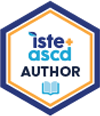
Event Information

*Within the context of this outline, ‘students’ will refer to the educators participating in the lesson within the context of a LEARNER.
Learning Objectives:
*Students will be able to define repeated addition.
*Students will be able to use loops and arrays to
solve repeated addition problems.
*Students will be able to explain the relationship
between repeated addition, loops, and arrays.
Materials:
Manipulatives (KaiBot, programming cards, magnetic tiles)
Procedures:
*As participants filter in, let them know they have the option of being blindfolded to participate as a non-sighted person. Resources will be provided in Braille.
Engaging Question (10 minutes):
* Present students with a real-world scenario involving repeated addition, such as "If you have 3 bags of candy with 4 pieces in each bag, how many pieces of candy do you have in total?"
* Encourage students to brainstorm different ways to solve this problem. Acknowledge diversity in learning and allow students to pick a number if they wish to work in a large group (3 - 4 people), pick a letter if they want to work in a small group (2 people), or they may work individually. Ask participants to write down any other diverse learning needs they may have on an index card. If they do not have any, they should write NONE on the card. If they have tactile needs they should leave the card blank.
Discovery and Discussion (15 minutes):
*Facilitate a discussion about the different strategies students used to solve the problem.
*Teacher Timeout: Provide teachers with necessary background information on the programming cards that students would have experienced prior to this 2nd grade lesson.
*Introduce the concepts of loops and arrays as tools for representing repeated addition.
*Guide students to discover the relationship between repeated addition, loops, and arrays.
Application (20 minutes):
*Present students with a variety of repeated addition problems.
*Encourage them to use loops and arrays to solve these problems.
*Provide opportunities for students to explain their reasoning and justify their answers as teachers walk about the room listening to learning taking place.
Reflection and Extension (10 minutes):
*Ask students to reflect on what they learned about repeated addition, loops, and arrays.
*Encourage them to explore additional applications of these concepts in real-world situations.
Assessment:
*Observe students as they work on the exploration and application activities.
*Assess their ability to use loops and arrays to solve repeated addition problems.
*Evaluate their understanding of the relationship between repeated addition, loops, and arrays through their explanations and discussions.
Note: This inquiry-based approach allows students to actively engage with the material and develop a deeper understanding of the concepts. By providing opportunities for exploration, discovery, and application, students can construct their own knowledge and make connections between different ideas.
Alqahtani, M. M., Hall, J. A., Leventhal, M., & Argila, A. N. (2022). Programming in mathematics classrooms: Changes in pre-service teachers’ intentions to integrate robots in teaching. Digital Experiences in Mathematics Education, 1-29.
Kritzer, K. L., & Green, L. (2021). Playing With Code. American Annals of the Deaf, 166(3), 409-423.
Martin, D. A., Curtis, P., & Redmond, P. (2024). Primary school students' perceptions and developed artefacts and language from learning coding and computational thinking using the 3C model. Journal of Computer Assisted Learning.
Ronan, D., & Williams, H. (2024). EQUIPPED FOR THE {FUTURE}: Curriculum Planning Tools for Integrating Computer Science Into K-5 Content Areas. Curriculum & Teaching Dialogue, 26.
Williams, Heidi. No Fear Coding : Computational Thinking across the K-5 Classroom. Eugene, Or, International Society For Technology In Education, Moorabbin, Victoria, 2021.







| Related exhibitors: | Kai's Education |